Caldwell House in Scotland is more than just another abandoned mansion. As someone with an interest in abandoned places, I was immediately drawn to its complex history. I’m incredibly grateful to Scottish urban explorer Lewis Neilson, who provided much of the detailed information and first-hand context for this article.
His insights helped piece together the building’s tragic story. It began as a grand 18th-century Robert Adam estate, but its forgotten second life as a children’s mental hospital ended in a suspicious 1995 fire, leaving behind the haunting, roofless shell we see today. This is that story.
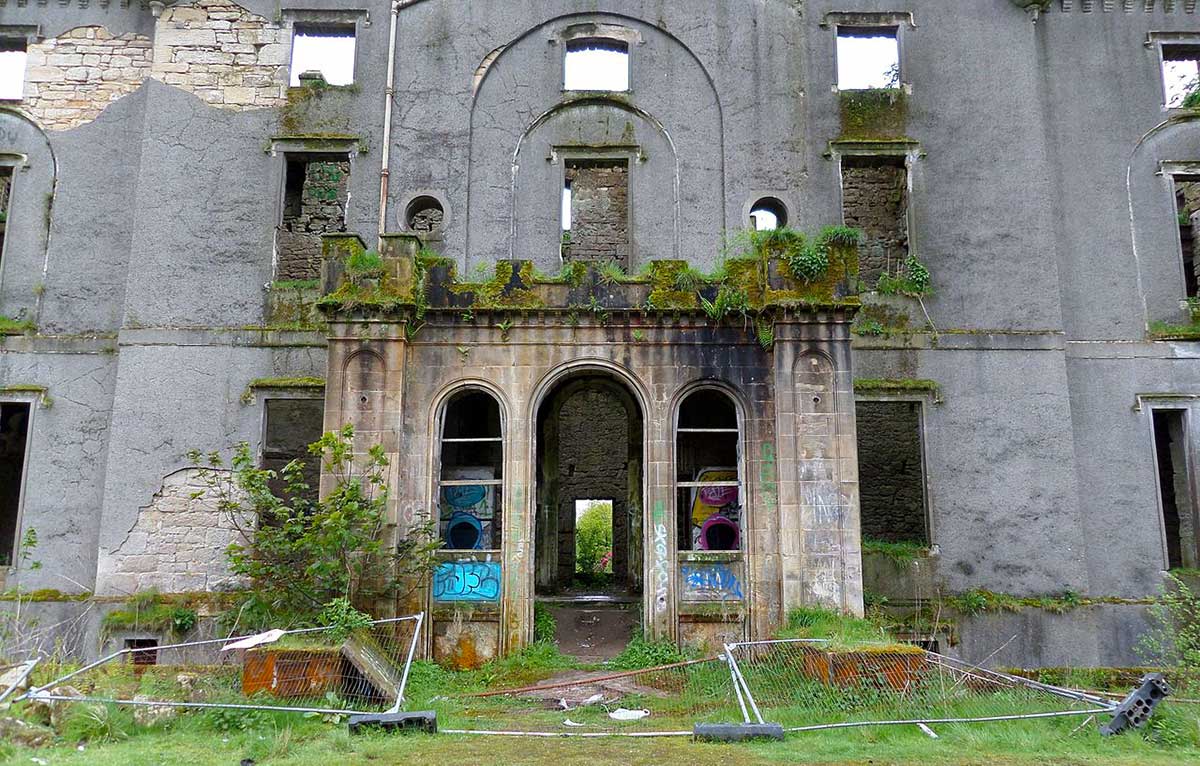
Where is Caldwell House?
Caldwell House is located near the village of Uplawmoor in East Renfrewshire, about 20 km (12 miles) southwest of Glasgow. It sits within Scotland’s west central Lowlands, with the city of Glasgow to the northeast and the large town of Paisley to the north. The estate lies in a rural setting of farmland and woodland, yet remains closely connected to these major urban centres, reflecting the mix of countryside and city that characterises much of the surrounding region.
The History of Caldwell House
Records of an estate at Caldwell can be dated back to 1294 when it neighboured the forest of Forenze, a favoured hunting location of the high stewards of Scotland who were tasked with overseeing the domestic affairs of the royal household. The Mure family’s first connection to Caldwell was in 1328 when Gilchrist Mure of Cowdams married the heiress of Caldwell. The estate grew throughout the 15th century and the family became to be called the Mures of Caldwell.
The Mures held favour with the Scottish royal family although there was some questionable behaviour. John Mure of Caldwell was murdered in an feud with the Cunningham family of Aiket in 1570 and his son Robert was jailed for harassing his tenants by James VI. At this time, the family lived in a castle on the estate, part of which remains as Caldwell Tower.
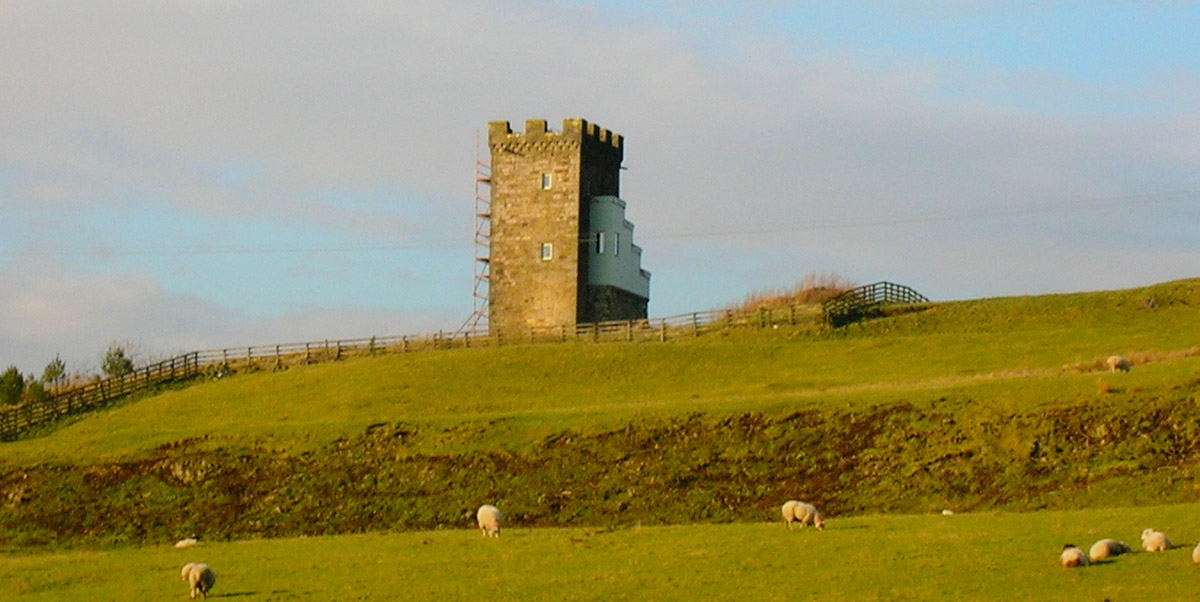
In 1666, William Mure was arrested for his support of the Covenanters’ cause and went into exile in Holland where he died shortly after. The Covenanters were a Scottish Presbyterian movement that committed themselves to the National Covenant, a document signed in 1638 that pledged to uphold the Presbyterian form of church government and resist any attempt by the king to interfere with it. The Covenanters fought against the Royalist forces led by Charles I and later against the forces of Oliver Cromwell during the English Civil War. Many Covenanters saw themselves as fighting not just for their religious beliefs, but also for the rights and freedoms of the Scottish people as a whole.
In 1690, Caldwell Estate was returned to the Mure family following William of Orange’s victory in the Glorious Revolution. A new house was constructed in 1712 and the old castle was left to ruin. This house featured a long avenue lined with lime trees and an elaborate garden. Very little information exists about this house but it lasted less than 70 years.
In 1773, William Mure of Caldwell, Baron of the Scottish exchequer, began construction of a new house built on the estate. The house was designed by the architect Robert Adam in the neoclassical style and is considered to be one of his finest works. It featured a grand entrance hall, ornate plasterwork and a sweeping staircase. Adam’s architectural style was characterised by a revival of classical motifs and forms, such as columns, pediments and symmetrical façades. He was known for his elegant and refined designs, which were often decorated with ornate features, frescoes and intricate detailing.
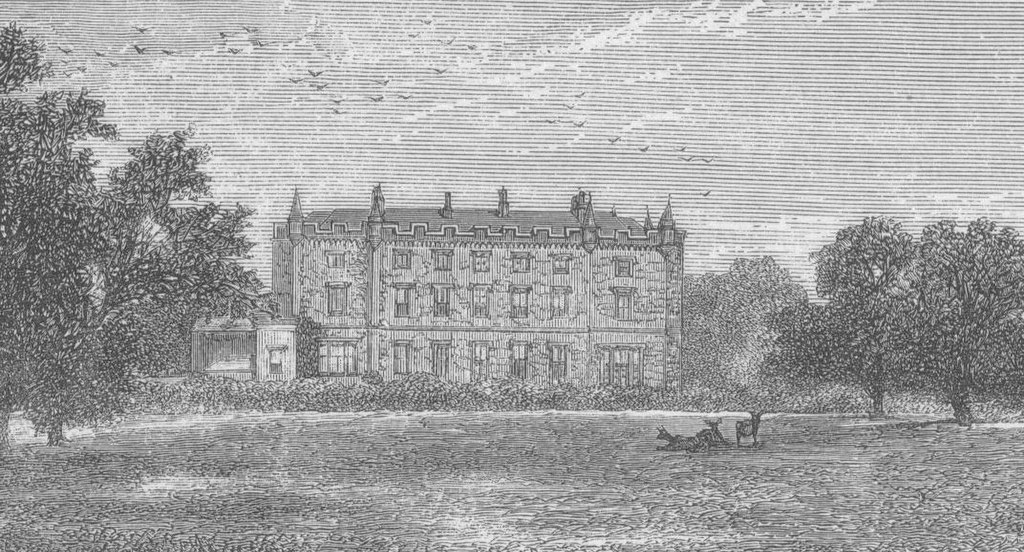
As part of the construction project, the former house was to be converted for use as stables and some of the gardens re-orientated to suit the new Caldwell House. By this period, Caldwell Castle had largely been robbed of its stone apart from a tower which it appears had crenellations added to fit the style of the house. It is suggested that it was used as a pigeon house or dovecote.
Baron William Mure died in 1776 before seeing the work completed and financial issues hampered construction for a number of years. It wasn’t until 1793 that the house was finally occupied. The conversion of the old house into stables is believed to have taken place in 1800 but it is uncertain when they were finally demolished.
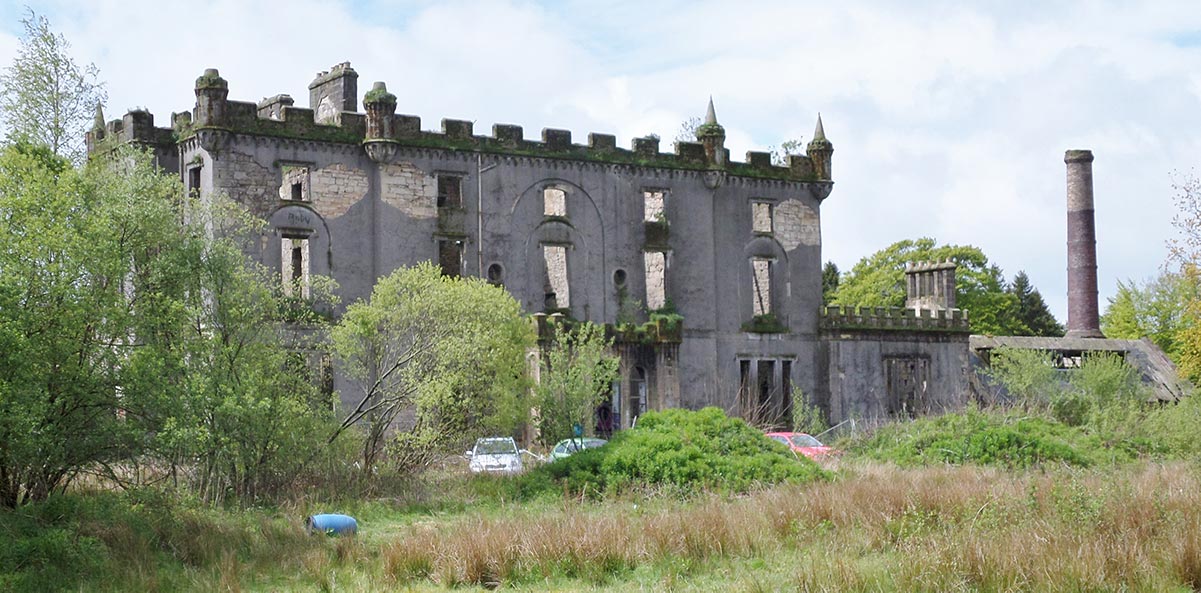
The Mures were able to recover financially from the difficulties during the construction of the house. Baron William’s son and grandson both held the role of rector of Glasgow University, a role he himself had held. His grandson and great-grandson were both elected Member of Parliament for Renfrewshire. All of the above had the name William Mure.
In 1909, costs to maintain Caldwell House had risen significantly and Colonel William Mure (great-great grandson of Baron William) decided to move to a property called Little Caldwell a short distance away. This had been constructed in the 17th century and had been held by the family since then. Colonel Mure extended Little Caldwell and moved his family out of Caldwell House.
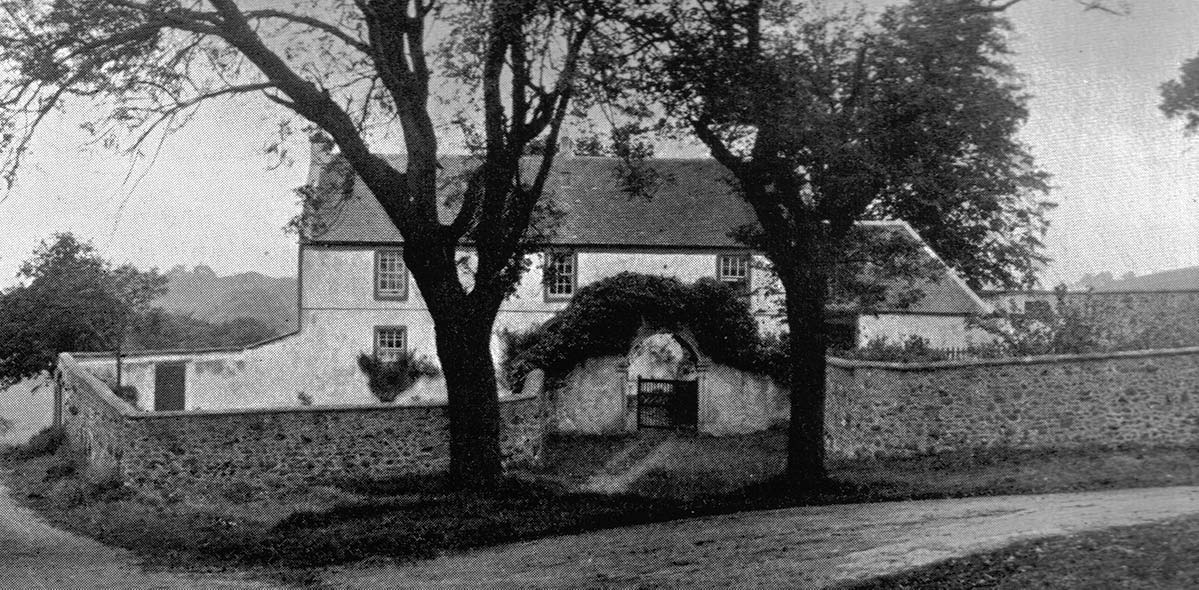
This move away from larger mansions was common in Britain during the early years of the 20th century. There are a variety of factors which contributed to their downfall. The primary reason was that maintenance costs were high. Many country houses were built on large estates that required a significant amount of money and labour to maintain. As the costs of upkeep continued to rise, many families found it increasingly difficult to justify the expense of keeping up a large estate. There were also significant changes in British society at the time, including the rise of urbanisation and the decline of the aristocracy. Many families found it difficult to maintain the traditional lifestyle associated with country house living in the face of these changes.
In 1923, the Caldwell Estate, including 280 acres of land, offices, a walled garden and Caldwell House itself, was sold to the Govan District Board of Control for £7,500. From 1927, the house was adapted to serve as a hospital for the mentally ill and later it was converted into a children’s home. These institutional uses brought practical but unsympathetic alterations, such as the removal of the main staircase to install a lift and the addition of external fire escapes, which compromised the architectural integrity of the building.
Why was it Abandoned?
By the time the children’s home closed in 1985, Caldwell House had endured decades of heavy use without significant investment in repairs or preservation. The cost of restoring the building to a habitable condition was deemed prohibitively high, especially given its age, altered structure and declining suitability for modern purposes. With no new role found and no funds allocated for conservation, the property was left abandoned and over time the lack of maintenance accelerated its decline into the ruin seen today.

What is Caldwell House Like Now?
The estate was sold in lots and the house passed into private ownership. There were plans to have the property converted as part of a wider nursing home project on the grounds but they didn’t come to fruition. When the Scottish Civic Trust inspected the building in 1992, they found it to be in a state of dereliction with broken windows, unsecured entrances and much of the interior lost. In 1995, a fire caused extensive damage with the roof collapsing as a result.
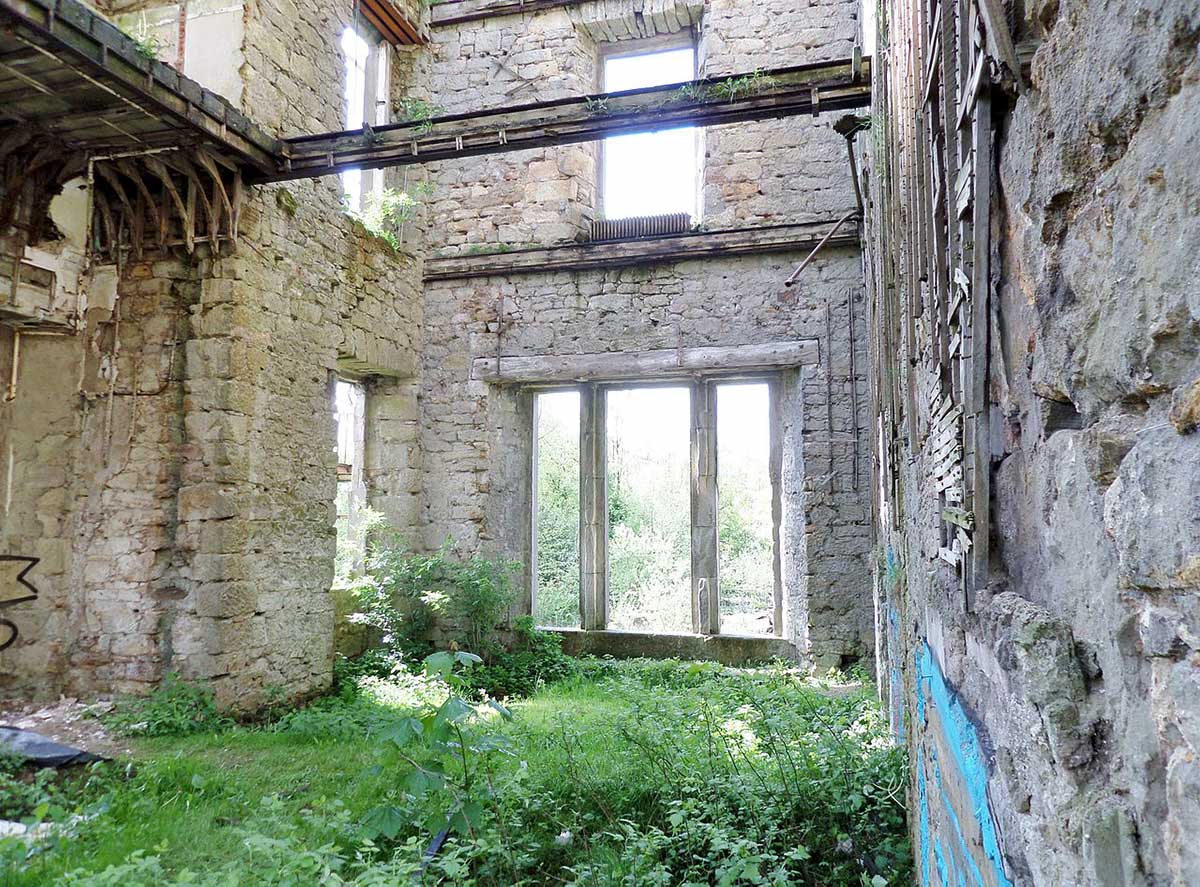
The building remained abandoned for a number of years with significant deterioration following the collapse of the roof. Renfrewshire Council served notice on the owner to repair the property but work was not undertaken. It changed hands in 2010 with no further development and was sold again in 2019. This latest owner has since lodged plans to have the building and part of the surrounding estate converted into a retirement village. It is hoped that this new proposal will finally bring life back to Caldwell House.
For me, the story of Caldwell House is one of the most tragic in Scotland. It’s a building with two ghosts: the first, its life as a grand Robert Adam estate, and the second, its sad history as a children’s home. The suspicious 1995 fire that left it a roofless shell is the final, violent chapter.
While the building is a dangerous ruin, I found this fantastic exploration video filmed in 2020. It gives a raw, on-the-ground look at the haunting shell of the building, showing exactly what remains of the house today after its long and tragic history.

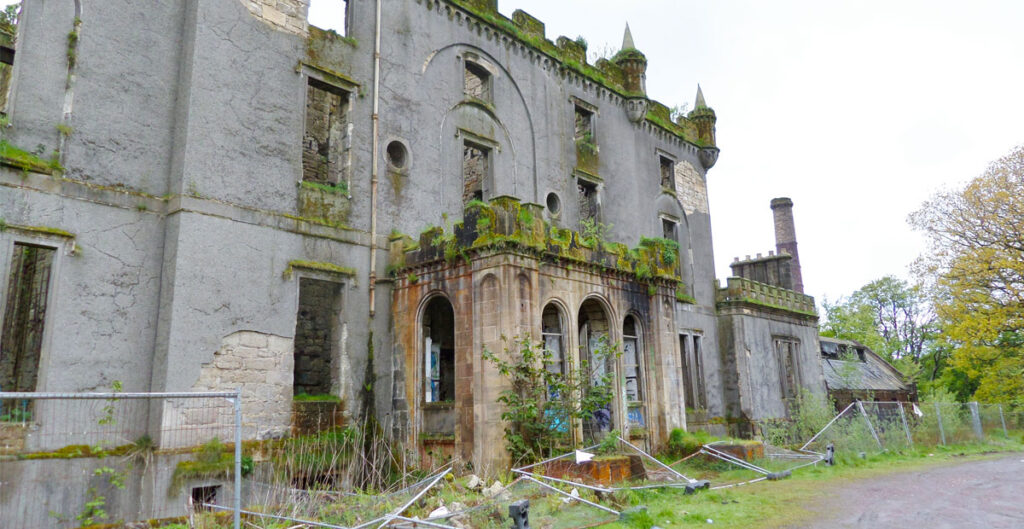
I am a Caldwell, my maiden name. We are planning a trip this Summer to visit Scotland. My mother’s people were Applegates from Scotland. I am Scottish on both sides .Look for to coming.
Hello! You’re potentially a very very very VERYYY distant cousin of mine! I’ve started a family tree on ancestry and come to show the from the 1500s were my 15th great grandparents! I’d love to visit this place too! If you decide to go please let me know how it is! I’d love to see some family history!
Hello Holly,
I would love to see the family tree that you created on ancestry.com. I too am a Caldwell with roots in Scotland. I never did give up my maiden name. My mother was a Drummond.
Hey Hello!! I’m a Calwell too, Jackie and I’m travelling up to Scotland now in June for my 59th birthday. My dream trip coming true…. My son was working on a family tree too some years ago. I will certainly try and visit the Caldwell Castle, House, Little House everything 😉
Hi! Old photos of Caldwell castle and stories have come through my mother’s family (she was a red head, green eyed Caldwell with Irish/Scottish roots) . My grandfather (James Bruce Caldwell) was from North Dakota. I have a couple of Black/white photos of the tower and when it was a hospital. It’s what my family had, but others might have the same. 🙂 Anybody is free to email me about this!
I just found out while doing my family tree that when my Gran was walking while carrying her baby a boy tripped her up and she fell and dropped the baby and the baby ended up brain damaged and was put into Caldwell house and died there at the age of 18. I wonder if there’s anywhere I can find records of what age she was when she went there and I know I’m pushing it but maybe photographs of residents in the hope I can see what she looked like and see what kind of life she had.
Hi! Old photos of Caldwell castle and stories have come through my mother’s family (she was a red head, green eyed Caldwell with Irish/Scottish roots) . My grandfather (James Bruce Caldwell) was from North Dakota. I have a couple of Black/white photos of the tower and when it was a hospital. It’s what my family had, but others might have the same. 🙂 Anybody is free to email me about this!